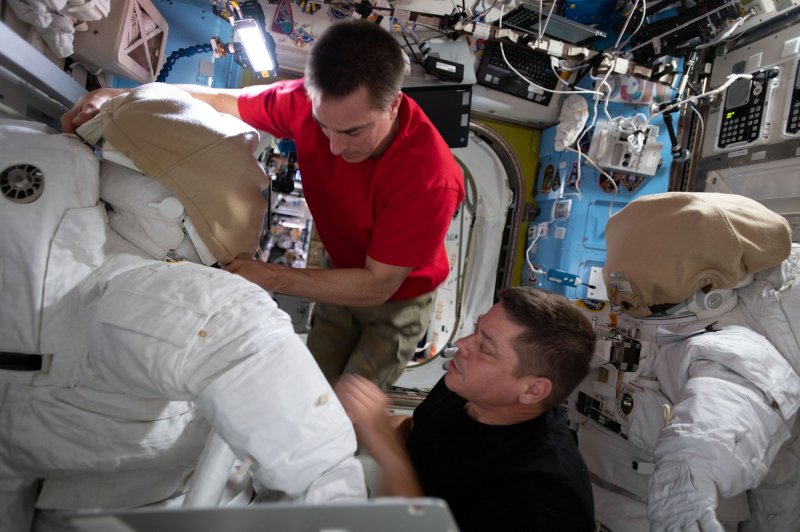Astronauts conclude third spacewalk on historic SpaceX mission
July 16 (UPI) -- NASA's latest spacewalk at the International Space Station concluded on Thursday with two astronauts replacing more aging batteries.
Bob Behnken and Chris Cassidy switched on their spacesuits at 7:10 a.m. EDT, officially marking the start of the 230th spacewalk at the orbiting laboratory.
The astronauts replaced six nickel-hydrogen batteries with three new lithium-ion batteries, with NASA nearing completion of a two-year project to upgrade the space station's power system.
Astronauts have removed 48 aging power cells, and 23 of the newer units were installed -- during 11 spacewalks. One final new battery awaits installation when the Behnken and Cassidy plan to venture out again on Tuesday.
The next spacewalk will be the 300th involving U.S. astronauts since Ed White stepped out of his Gemini 4 capsule on June 3, 1965.
On Tuesday, the astronauts plan to perform other maintenance -- including preparations for the arrival of a new airlock built by Houston-based NanoRacks, designed to release experiments into space. SpaceX plans to send the new airlock later this year.
Astronaut Doug Hurley joined the duo Wednesday afternoon for a spacewalk review and a conference with specialists on the ground, according to NASA. He assisted astronauts in and out of their spacesuits and monitored spacewalk activities.
Hurley also did a brief medical exam of his crewmates "similar to a doctor conducting a checkup on Earth," NASA said.
Behnken and Hurley arrived at the space station May 31 as part of the historic return to crewed spaceflight from U.S. soil. The mission also marked the first time Elon Musk's SpaceX carried humans into space.
NASA extended the historic trip to space -- planned initially as a five-day demonstration -- by several months because the batteries needed replacement.
Those replacements will "put the station in a much better configuration long-term," Kenneth Todd, the space station's manager for integration and operations, told reporters last month.



Comments
Post a Comment